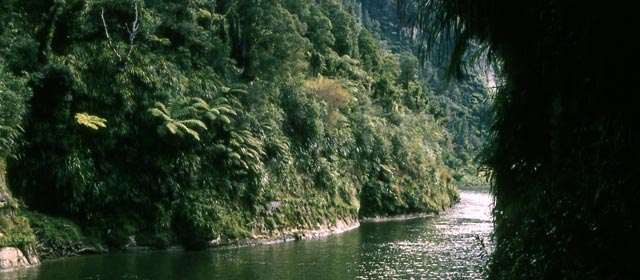Story summary
Ancestors
The peoples of the Whanganui River are collectively called Ngāti Hau. The ancestors associated with the river include:
- the explorer Kupe, who paddled to a place where one of his men, Arapāoa, drowned swimming across the flooded river. Kupe named the spot Kauarapāoa.
- Haunui-a-Pāpārangi, who according to some traditions gave his name to the people of the river, Ngāti Hau. Haunui-a-Pāpārangi arrived with Turi, captain of the Aotea canoe.
- Haupipi, who also arrived with Turi. Some believe that Ngāti Hau are named after him.
- The explorer Tamatea-pōkai-whenua, who sent a servant ashore to find flax for a topknot (pūtiki). The place came to be called Pūtiki, and is today a village across the river from Wanganui.
The plaited rope
The unity of the Whanganui River peoples is expressed in a famous saying, ‘te taura whiri a Hinengākau’ (the plaited rope of Hinengākau). This refers to the three closely connected groups of the river, and before them to the ancestor Tamakehu’s three children: Hinengākau of the upper river, Tama Ūpoko of the middle, and Tūpoho of the lower Whanganui.
War
Whanganui tribes were attacked by tribes from the north in the 1820s. Then Europeans settled in Wanganui town in 1840. The people of the lower Whanganui River began to trade with the town, and many were converted to Christianity. Their upper river cousins became involved in a new religion called Pai Mārire or Hauhau, which opposed European settlement. The two groups fought, and the most tragic event was a battle on a small island, Moutoa, in the middle of the river, in 1864. But the two groups joined together again in 1869 to fight against the guerrilla leader Te Kooti, in the upper river area.
20th century
Riverboats brought tourism to the river and upset traditional practices such as harvesting eels. For over a century the Whanganui tribes fought for their rights to the river, and in 1995 they occupied Pākaitore (Moutoa Gardens) for 79 days to defend their claims.
About 13,500 people were affiliated with the Whanganui tribes in 2013.





